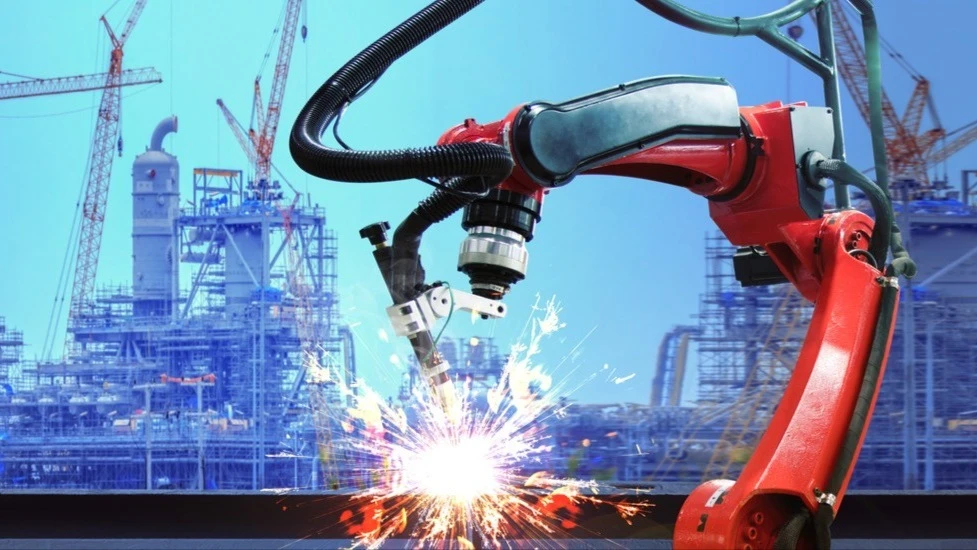AI's impact on modern construction unleashed

GLOBALLY, individuals and businesses spend over $10 trillion per year on construction-related activities -- and that's projected to keep growing by 4.2 percent until 2023. Part of this enormous amount of spending is on, and enabled by, rapidly-moving technological advancements that touch all areas of the ecosystem.
In a recent report dubbed: “The Next Normal in Construction: How Disruption is Shaping the World's Largest Ecosystem,” McKinsey identified a growing focus on solutions that incorporate Artificial Intelligence (AI).
AI in construction has the potential to help players realize value throughout project lifecycles, including design, bidding, and financing; procurement and construction; operations and asset management; and, business model transformation.
In fact, AI in construction helps the industry as a whole overcome some of our toughest challenges, including safety concerns, labor shortages, and cost and schedule overruns.
As market barriers to entry steadily lower, and advancements in AI, machine learning (ML), and analytics accelerate, you can expect AI (and allocation of resources funneled towards AI) to play a more significant role in construction in the coming years.
What is AI and machine learning in construction?
AI is an aggregative term for describing when a machine mimics human cognitive functions, like problem-solving, pattern recognition, and learning. Machine learning is a subset of AI. Machine learning is a field of artificial intelligence that uses statistical techniques to give computer systems the ability to "learn" from data, without being explicitly programmed. A machine becomes better at understanding and providing insights as it is exposed to more data.
As applied in construction, the 'questions' and algorithms get significantly more complex. For instance, a machine learning program may track and evaluate progress in a grading plan to identify schedule risks early. The algorithms might 'ask quetions' about cut and fill volume measurements, machine uptime and downtime, weather patterns, previous projects, or any number of inputs to generate a risk score and determine if notifications need to be made.
AI and machine learning for smart construction
The potential applications of machine learning and AI in construction are vast. Requests for information, open issues, and change orders are standard in the industry. Machine learning is like a smart assistant that can scrutinize this mountain of data. It then alerts project managers about the critical things that need their attention. Several applications already use AI in this way. Its benefits range from mundane filtering of spam emails to advanced safety monitoring.
The following are the benefit of using AI in construction.
Prevent cost overruns
Most mega projects go over budget despite employing the best project teams. Artificial Neural Networks are used on projects to predict cost overruns based on factors such as project size, contract type and the competence level of project managers. Historical data such as planned start and end dates are used by predictive models to envision realistic timelines for future projects. AI helps staff remotely access real-life training material which helps them enhance their skills and knowledge quickly. This reduces the time taken to onboard new resources onto projects. As a result, project delivery is expedited.
AI for better design of buildings through generative design
Building Information Modeling is a 3D model-based process that gives architecture, engineering and construction professionals insights to efficiently plan, design, construct and manage buildings and infrastructure. In order to plan and design the construction of a project, the 3D models need to take into consideration the architecture, engineering, mechanical, electrical, and plumbing (MEP) plans and the sequence of activities of the respective teams. The challenge is to ensure that the different models from the sub-teams do not clash with each other.
The industry uses machine learning in the form of AI-powered generative design to identify and mitigate clashes between the different models generated by the different teams to prevent rework. There is software that uses machine learning algorithms to explore all the variations of a solution and generates design alternatives. Once a user sets up requirements in the model, the generative design software creates 3D models optimized for the constraints, learning from each iteration until it comes up with the ideal model.
Risk mitigation
Every construction project has some risk that comes in many forms such as quality, safety, time, and cost risk. The larger the project, the more risk, as there are multiple sub-contractors working on different trades in parallel on job sites. There are AI and machine learning solutions today that general contractors use to monitor and prioritize risk on the job site, so the project team can focus their limited time and resources on the biggest risk factors. AI is used to automatically assign priority to issues. Subcontractors are rated based on a risk score so construction managers can work closely with high-risk teams to mitigate risk.
Project planning
One construction intelligence company launched in 2017 with the promise that its robots and artificial intelligence hold the key to solving late and over budget construction projects. The company uses robots to autonomously capture 3D scans of construction sites and then feeds that data into a deep neural network that classifies how far along different sub-projects are. If things seem off track, the management team can step in to deal with small problems before they become major issues. Algorithms of the future will use an AI technique known as “reinforcement learning.” This technique allows algorithms to learn based on trial and error. It can assess endless combinations and alternatives based on similar projects. It aids in project planning since it optimizes the best path and corrects itself over time.
AI makes jobsites more productive
There are companies that are starting to offer self-driving construction machinery to perform repetitive tasks more efficiently than their human counterparts, such as pouring concrete, bricklaying, welding, and demolition. Excavation and prep work is being performed by autonomous or semi-autonomous bulldozers, which can prepare a job site with the help of a human programmer to exact specifications. This frees up human workers for the construction work itself and reduces the overall time required to complete the project. Project managers can also track job site work in real time. They use facial recognition, onsite cameras, and similar technologies to assess worker productivity and conformance to procedures.
AI for construction safety
Construction workers are killed on the job five times more often than other laborers. According to OSHA, the leading causes of private sector deaths (excluding highway collisions) in the construction industry were falls, followed by struck by an object, electrocution, and caught-in/between. A Boston-based construction technology company create an algorithm that analyzes photos from its job sites, scans them for safety hazards such as workers not wearing protective equipment and correlates the images with its accident records. The company says it can potentially compute risk ratings for projects so safety briefings can be held when an elevated threat is detected.
AI will address labor shortages
Labor shortages and a desire to boost the industry’s low productivity are compelling construction firms to invest in AI and data science. A 2017 McKinsey report says that construction firms could boost productivity by as much as 50 percent through real-time analysis of data. Construction companies are starting to use AI and machine learning to better plan for distribution of labor and machinery across jobs.
A robot constantly evaluating job progress and the location of workers and equipment enables project managers to tell instantly which job sites have enough workers and equipment to complete the project on schedule, and which might be falling behind where additional labor could be deployed.
An AI-powered robot such as Spot the Dog can autonomously scan a jobsite every night to monitor progress - making it possible for a large contractor like Mortenson to get more work done in remote areas where skilled labor is in short supply.
Off-site construction
Construction companies are increasingly relying on off-site factories staffed by autonomous robots that piece together components of a building, which are then pieced together by human workers on-site. Structures like walls can be completed assembly-line style by autonomous machinery more efficiently than their human counterparts, leaving human workers to finish the detail work like plumbing, HVAC and electrical systems when the structure is fitted together.
To be continued…
Sumana Rao is the Global Product Marketing Leader for Buildings Content. She can be reached through social media
Top Headlines
© 2024 IPPMEDIA.COM. ALL RIGHTS RESERVED

























